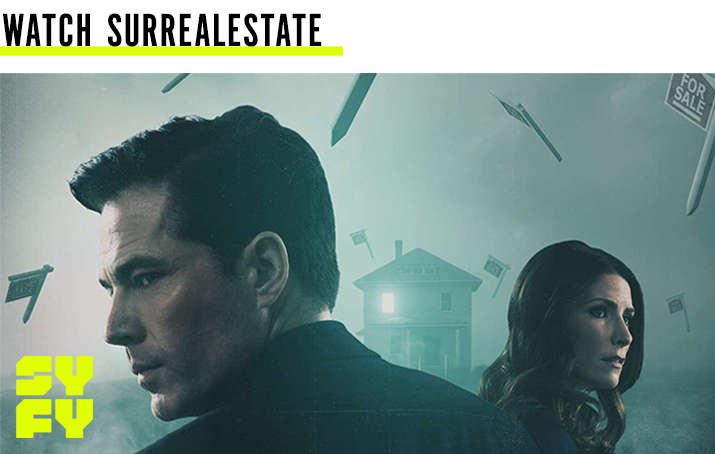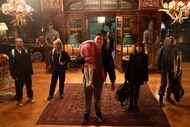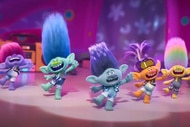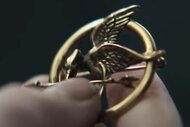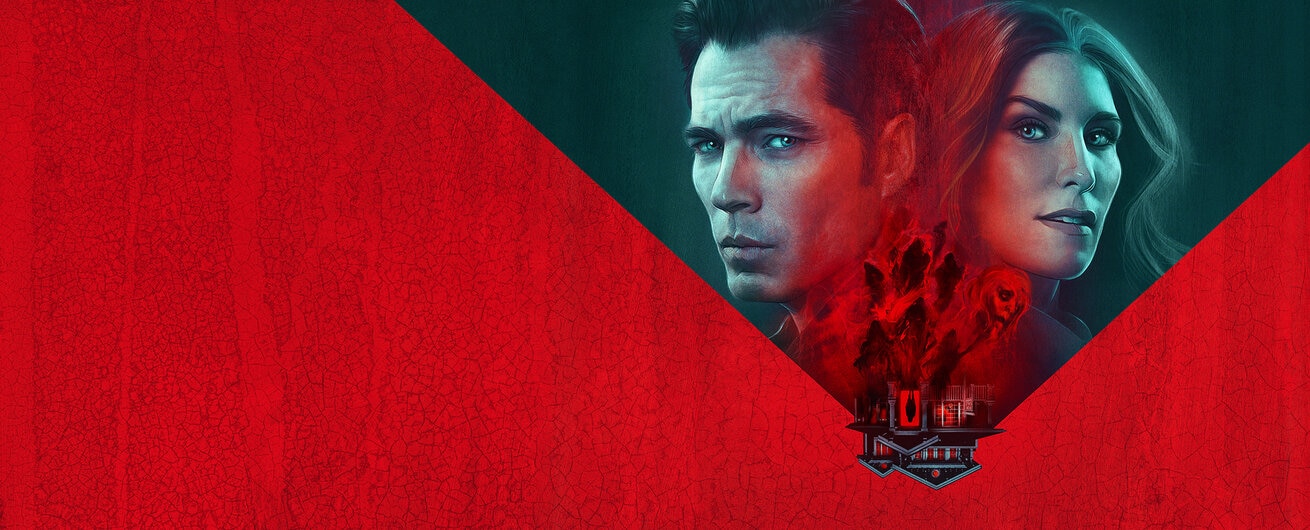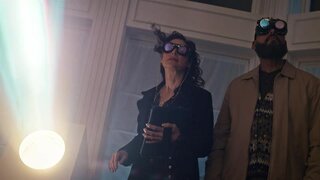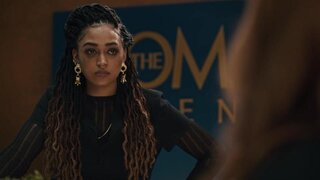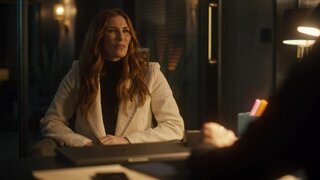Create a free profile to get unlimited access to exclusive videos, sweepstakes, and more!
SYFY's SurrealEstate is using underwater screams, slamming doors & Greek myths to up the scare factor
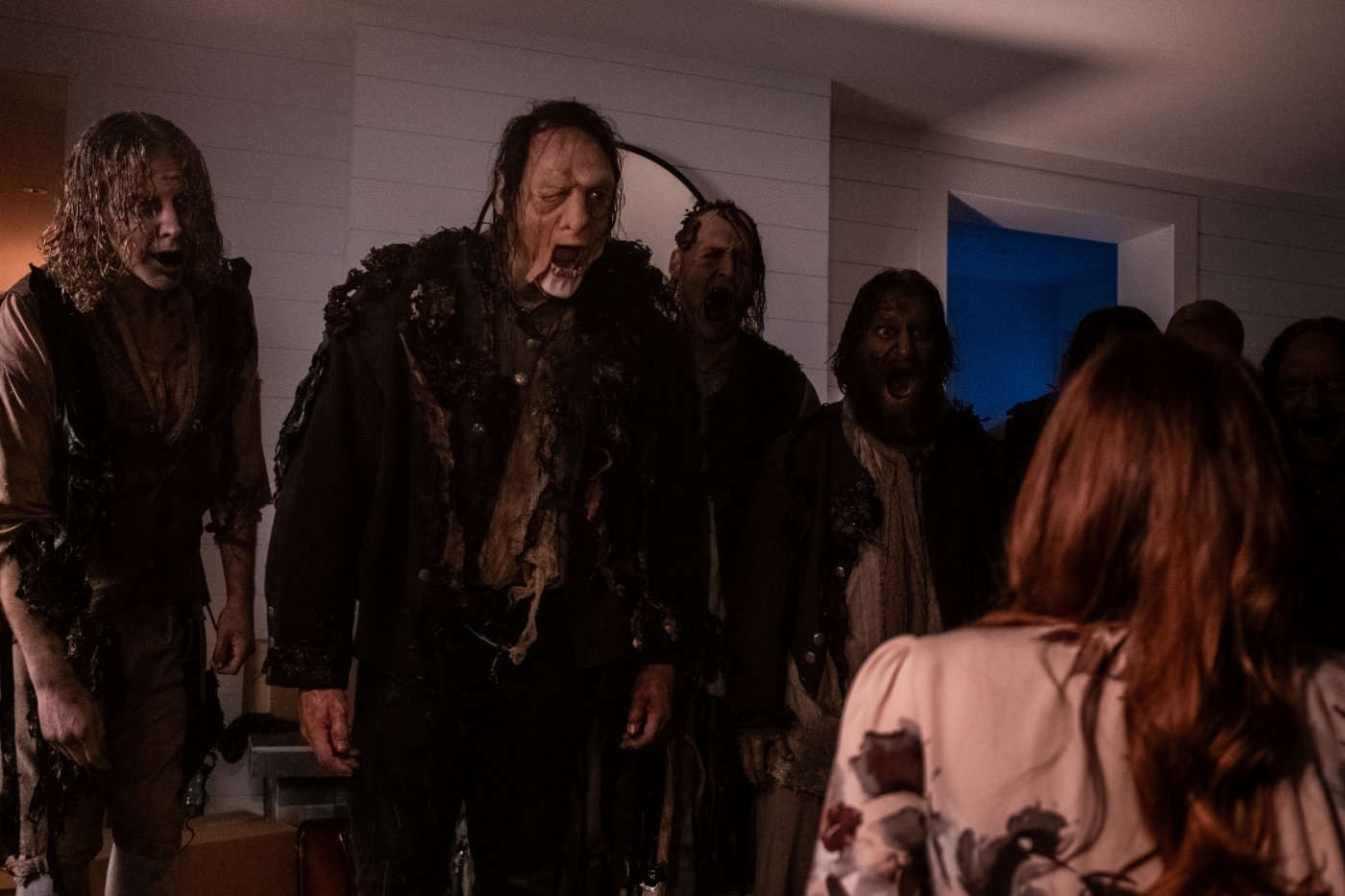
SYFY’s latest series, SurrealEstate, is more than your average spookfest. Sure, there are demons pretending to be little girls, supposed poltergeists tossing picture frames around the room, and a devil dog crawling out of a particularly hellish hole, but the Roman Agency has more going on than clearing homes for sale and fighting off the monster of the week.
“In its early episodes, we were very inspired by the score of The Omen and The Exorcist,” series composer Spencer Creaghan explains to SYFY WIRE. “And a lot of the episodes really hearken back to that ‘70s string choir, very almost apocalyptic-type scoring.”
From the first moment Luke Roman (Tim Rozon) shows up in Episode 1, we know he’s not much like other horror genre heroes. Backlit by a raging storm and peeking out from under a broad-brimmed hat in an homage to The Exorcist, Luke immediately subverts the audience’s expectations by cracking jokes and treating his employees like family from week one. There’s warmth despite the mystery. The multifaceted elements at play are helped along by Creaghan’s score, which jumps from the aforementioned ‘70s horror elements to incorporating “underwater screams.”
Read on for our interview with Creaghan, in which we discuss balancing SurrealEstate’s mystery with its unerring heart, and tease what’s to come as Season 1 continues.
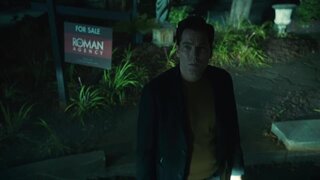
There are a lot of different genres going on in SurrealEstate: horror, drama, comedy. What kinds of conversations were you having with the creators from the get-go about balancing all this?
We spoke for quite a while about what the tone of the show was gonna be. Because I know [series creator] George [Olson] really wanted to make sure that we equally balanced out the horror, comedy, and especially the heart — and that was something that we spent quite a while to get right. The heart was something I remember reading in the script and absolutely loving that. I remember spending a lot more of my effort making the heart work as much as the other elements. And it wasn’t until watching the first cut of the scenes and looking at this beautiful landscape that the idea of bringing in Irish folk instruments landed into place and helped us establish the balance between each of the tones. It really helped to bring out something that George mentioned early on and that was that he wanted to relay a sense of ancientness.
One of the biggest scenes I can think of right now is one of the ones I remember writing off the top, which is the batting cage scene with Luke and Susan. And I remember watching this and thinking we could play up the friendly banter; you could play up Susan trying to figure out who this guy is. And the other is to give us a little bit of an instance of who Luke might be but never give anything away, like, “What’s this other world that he’s talking about? What is this other essence around this man?” I think by using the Irish instruments to bring out the other world, the guitars to bring out the friendship, and the piano to bring out the inquisition, all of those nicely brought around the tone of what this show might become. That theme found its way into every single episode, especially at the end of most episodes, always revolving around Luke and Susan as Luke brings Susan further into the metaphorical and sometimes real ethereal plane which he works on. I remember talking to most of my musicians, because there’s a line that Susan says in that scene that revolves around the ethereal plane, and I remember thinking, “Once we’re on that plane, we’ve got it. And if we’re not on that plane, we need to figure out a way to get there.” That was the goal of every piece of music. Are we entering the ethereal plane either metaphorically or literally?
Another powerful element of the series is Father Phil’s (Adam Korson) struggle with the religion he once loved and devoted his life to. In Episode 5, we got a lot of dramatic music associated with his journey. Could you explore that a bit?
That episode is probably up there as one of my favorites in the entire season. I kept thinking a lot about my own relationship with faith and especially Catholicism and what that inner struggle is like, and I kept thinking about almost this calling. I believe I called the theme “The Angels Are Calling” theme, but more in the sense that they’re calling out but you don’t know if you want to answer. I kept thinking about that as somewhere we can take it, because he has that very visceral moment about halfway through the episode, and that’s one where we just felt like this is the scene to figure out what this melody could become, and once we get that right the rest of it can hopefully fall into place.
That scene really feels to me like he’s calling out, he’s asking for help, but he also doesn’t want it at the same time. Adam just blew me away with that entire moment. He nailed that scene. I’m getting emotional just talking about it. I just kept thinking about what it would be like if someone was calling out like, “I’m here to help you,” and you’re like, “Yeah, but you didn’t do it last time and I don’t know if I can believe you this time.” But then also knowing that you still love that idea. It’s just betrayed you too often for you to know if you can keep going. That was a hard episode to write and I think it’s one of my favorites because of that, and that melody is one that I hope we’ll be able to use much more in the future; that character is one I personally very much connect to.
What kind of thought process went into creating the sound for each “haunting of the week,” so to speak?
Each house had its own melody but also its own atmosphere and palette. In the episode… with the sailors, that includes fog horns, ships bells, and underwater screaming. And in the episode [with the music artist and the little boy], that included hip hop track beats and also children’s stories. In the episode with Cindy [Episode 2], we had old folk instruments playing up the idea that this monster might have been around for many millennia and has a long history, and has an almost Hansel-and-Gretel kind of influence over children.
In a later episode... we looked to the sirens of Greek mythology — almost like angelic voices. So every episode has its own unique sonic palette, which was just amazing to have from week to week, but also very challenging. Because you think you have the tone of the show and then the next week … you think, “What is the sound of that? How are we going to make that musically exist and not be like anything we’ve done the past seven episodes?”
This interview has been edited and condensed for clarity — and to avoid spoilers. Be on the lookout for more of our conversation with Creaghan and other SurrealEstate creators and cast as the season continues.
New episodes of SurrealEstate air on SYFY every Friday at 10 p.m. ET.
